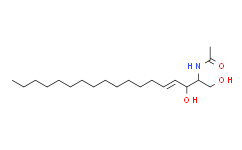C2 Ceramide (5 nM-200 μM; 24 hours; primary mouse osteoblasts) treatment (≤500 nM) promots osteoblast viability, whilst concentrations ≥2 μM significantly reduces osteoblast viability in a dose- and time-dependent manner.
C2 Ceramide increases cytoplasmic histone-associated DNA fragments by 5.7- and 11.2-fold at 50 μM and 100 μM C2 Ceramide concentrations respectively in osteoblasts. At these higher concentrations, C2 Ceramide is a potent inducer of apoptosis in osteoblasts.
C2 Ceramide up-regulates mRNA expression of angiogenic genes in human dental pulp cells (HDPCs) and increases the migration and capillary tube formation of endothelial cells, whereas PP1 small interfering RNA shows opposite effects. Human dental pulp cells (HDPCs) increases levels of bone morphogenetic protein 2, phosphorylation of Smad 1/5/8, and mRNA expression of runt-related transcription factor 2 and osterix.
Medlife has not independently confirmed the accuracy of these methods. They are for reference only.
Cell Viability Assay
| Cell Line: |
Primary mouse osteoblasts |
| Concentration: |
5 nM-200 μM |
| Incubation Time: |
24 hours |
| Result: |
Murine osteoblasts demonstrated a dose-dependent increase in their survival rate when exposed to low concentrations of 5-500 n?M. Increasing concentrations of 20-200μM caused a dose-dependent decrease in mitochondrial succinate dehydrogenase activity and osteoblast survival.
|



 扫码关注公众号
扫码关注公众号